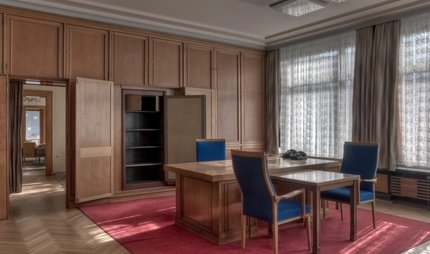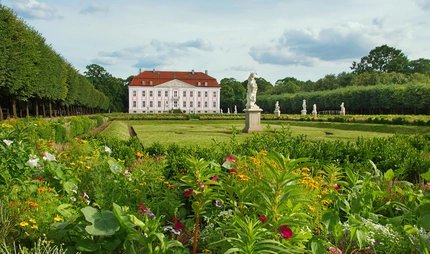
Central Cemetery Friedrichsfelde
The Socialist Cemetery
A number of famous Berlin figures are buried at the Zentralfriedhof Friedrichsfelde. A tour takes you through their story.
Every year in January, thousands of red carnations lie in the snow in front of the heavy stone memorial. In the background there are fir trees under a grey sky. It is a moment of remembrance – to Wilhelm and Karl Liebknecht, to Rosa Luxemburg and to many other well-known Berliners who were buried at the Zentralfriedhof Friedrichsfelde.
From a paupers’ graveyard to to a socialist cemetery
The cemetery, originally to be known as the Städtische Gemeindefriedhof für Berlin but then renamed Central-Friedhof Friedrichsfelde, was opened on 21 May 1881. All the cemeteries inside the city had reached the limits of their capacity. The Central Cemetery was open to people of all confessions and social strata. The costs of the headstones were often paid for by the city – it was a cemetery for the poor. Because of its attractive design by Herrmann Mächtig, a pupil of Lenné, wealthy bourgeois families began to use the cemetery from the beginning of the 20th century.
The cemetery became famous with the funeral of the Wilhelm Liebknecht. An estimated 100,000 to 150,000 people came to pay their last respects to the social democrat on 12 August 1900. Ever since then, the cemetery has been used as the burial place for prominent figures in the German worker’s movement. These include his son Karl Liebknecht and Rosa Luxemburg, both murdered in 1919 after the Spartacist uprising. The young Ludwig Mies van der Rohe, later architect of the Neue Nationalgalerie, designed a monument to the revolution in their honour. It did not last long – the Nazis destroyed it in 1935 along with the graves around it.
Today, thousands of people come to the Socialist Memorial at the cemetery every year in January to commemorate the history of the workers’ movement.
Tour of the cemetery
There are signs indicating the route for a tour of the cemetery site. From the main entrance on Gudrunstraße it first leads to the Socialist Memorial. Twelve panels tell the story of the cemetery and the biographies of well-known figures buried here. On the pergola path, one of the graves is that of the film director Konrad Wolf. The route continues past the resting place of the architect Simon Archenhold, co-founder of the observatory in Treptow, to the ceremonial hall. The chapel was designed by Herrmann Blankenstein. Arriving at the other end of the cemetery you come to the place where Mies van der Rohe’s monument to the revolution once stood.
On the way back, you pass the artists’ graves, including those of the sculptor Käthe Kollwitz and the painter Otto Nagel. Wolfgang Struck, the former director of the Friedrichstadt-Palast, is also buried here. Take at least one or two hours for your walk around the cemetery so that you have time to see everything.
open until dusk

